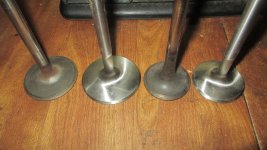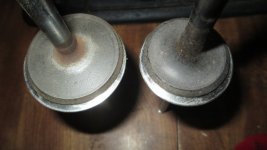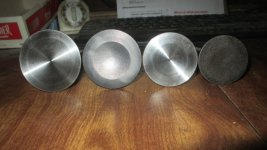toobroketoretire
Banned
After a LOT of thought I decided to replace my current piston rings with a set of Perfect Circle (Mahle) moly rings and install the larger high performance 2.190"/1.88" valves in my 1966/1967 closed-chamber 396"/427" heads. So I just bought a used Kwik Way valve grinding machine and a Black & Decker valve seat grinder set that has all of the standard mandrels and stones from 1-1/8" to 2-1/2". I haven't ground any valves or seats since about 1985 but I know what I'm doing.
The 365 hp thru 390 hp 454's basically use the old 396" 325 hp heads with the smaller 2.06"/1.72" valves so they quit breathing around 4800-5000 rpm when used on a 454". So the larger valves will help them breathe easier at the higher rpm's; especially with my .556" lift magnum camshaft. When I do the valve installation I'll also do some minor bowl cleaning and take pictures along the way.
I'll wait until the weather cools down into the high 70's/low 80's so maybe a month from now I'll get started.
The 365 hp thru 390 hp 454's basically use the old 396" 325 hp heads with the smaller 2.06"/1.72" valves so they quit breathing around 4800-5000 rpm when used on a 454". So the larger valves will help them breathe easier at the higher rpm's; especially with my .556" lift magnum camshaft. When I do the valve installation I'll also do some minor bowl cleaning and take pictures along the way.
I'll wait until the weather cools down into the high 70's/low 80's so maybe a month from now I'll get started.









